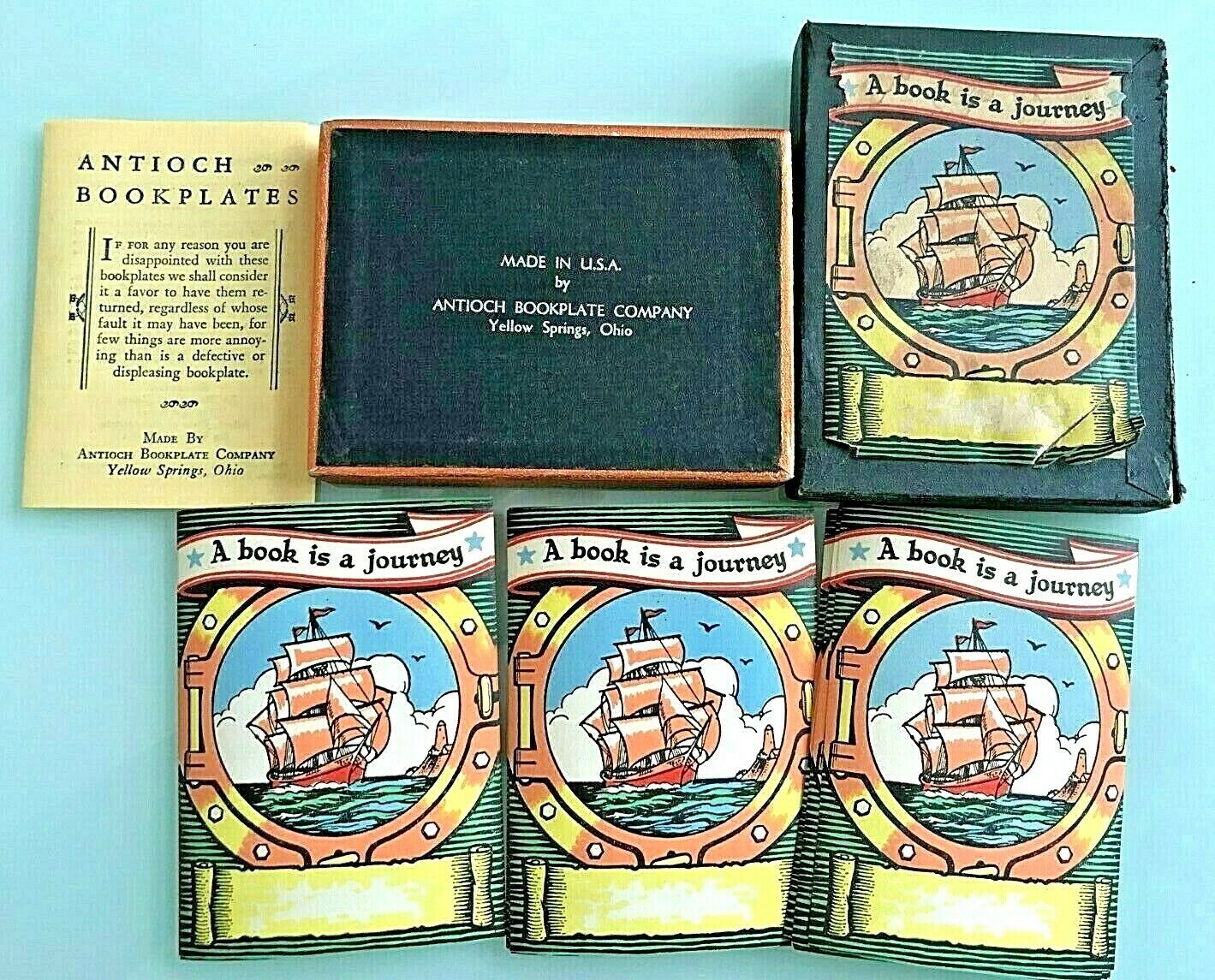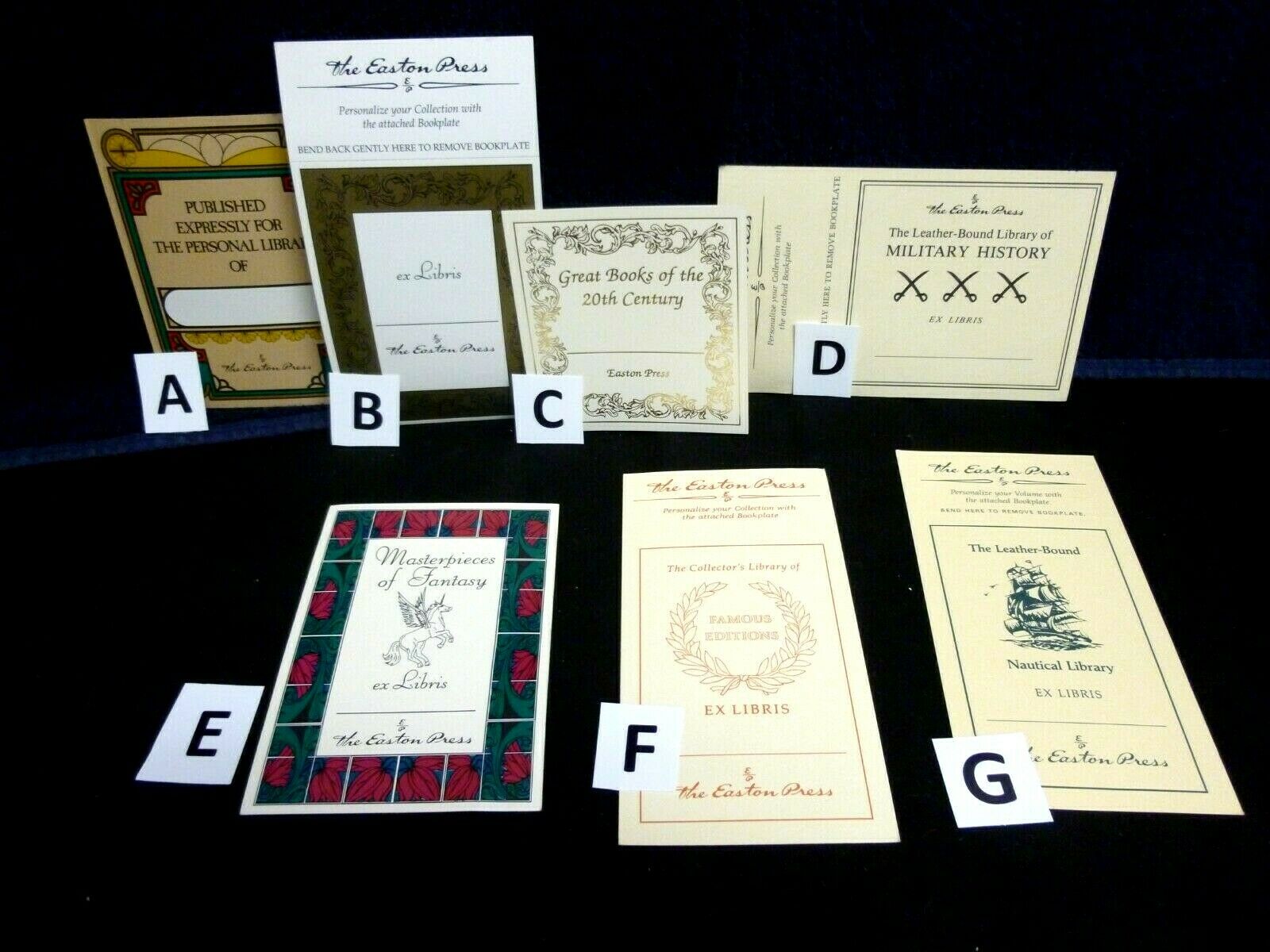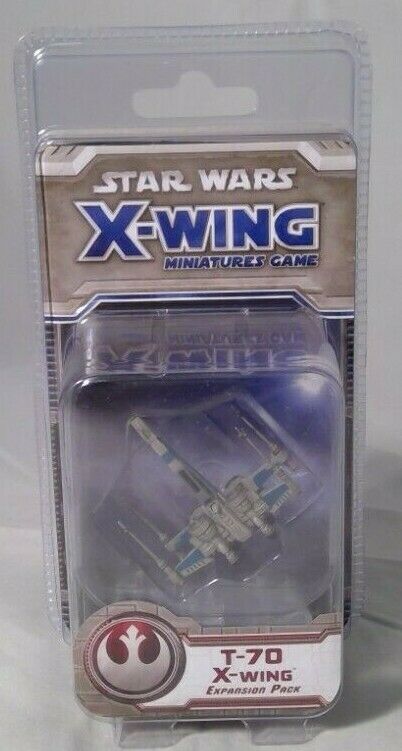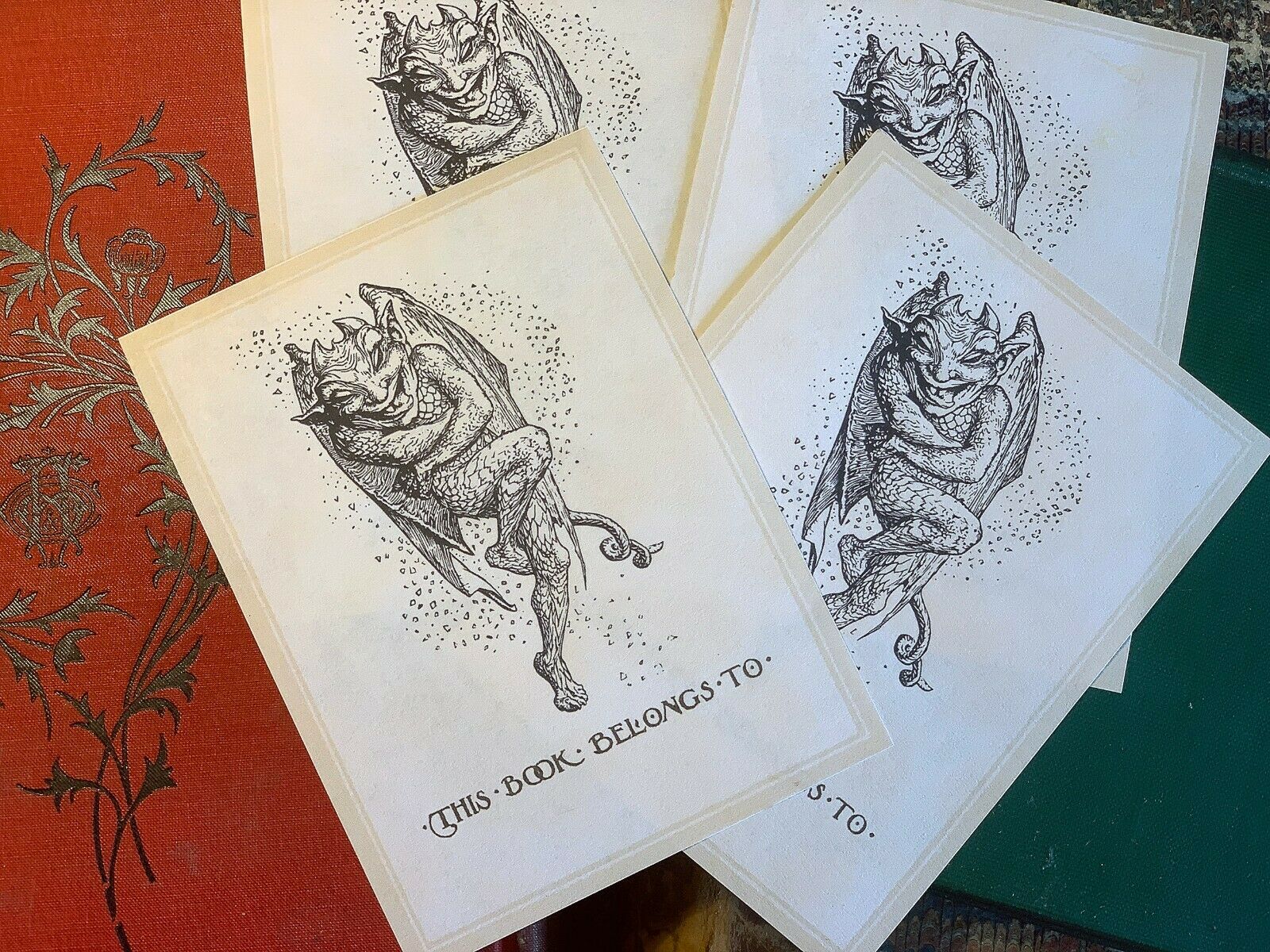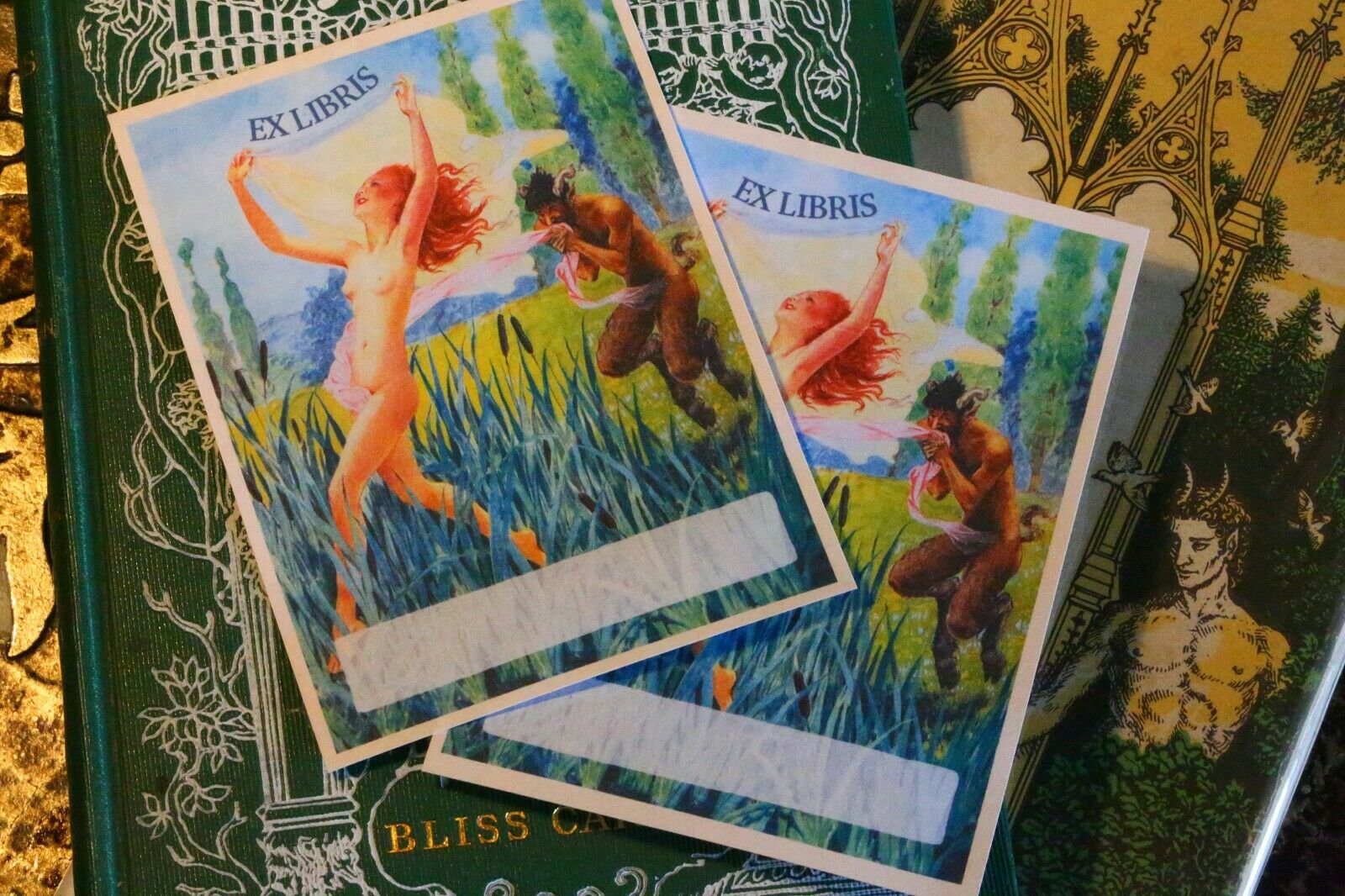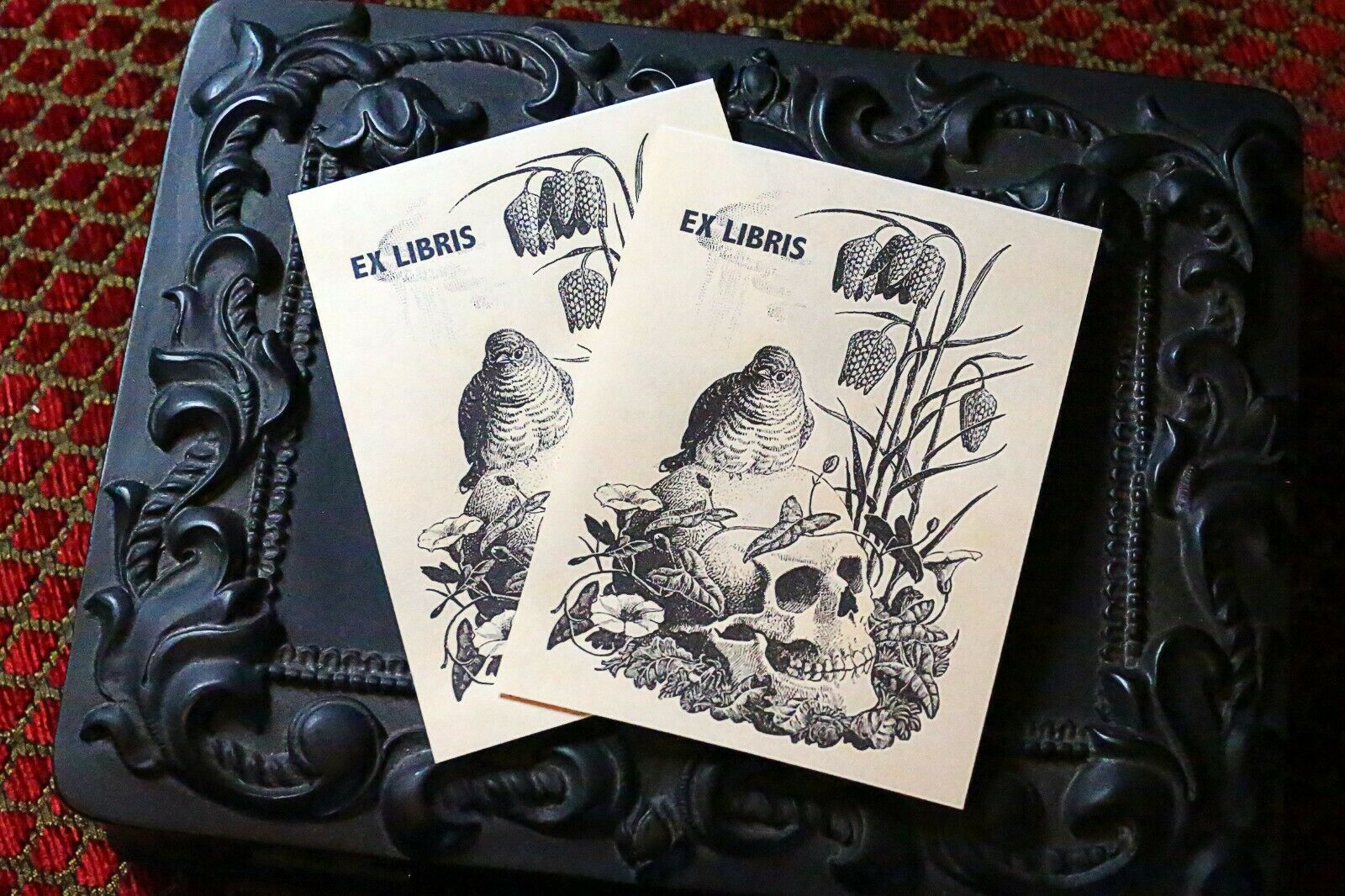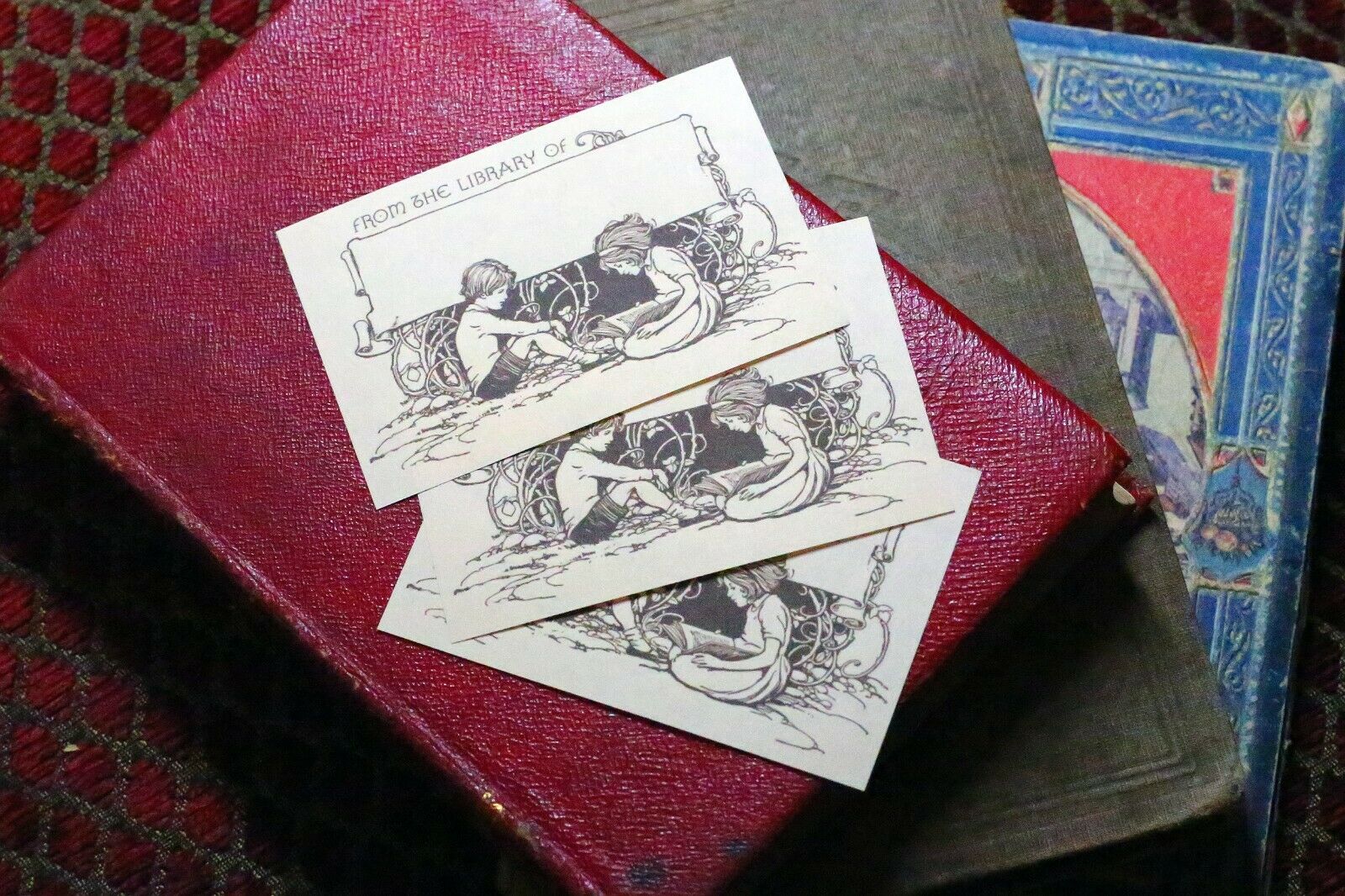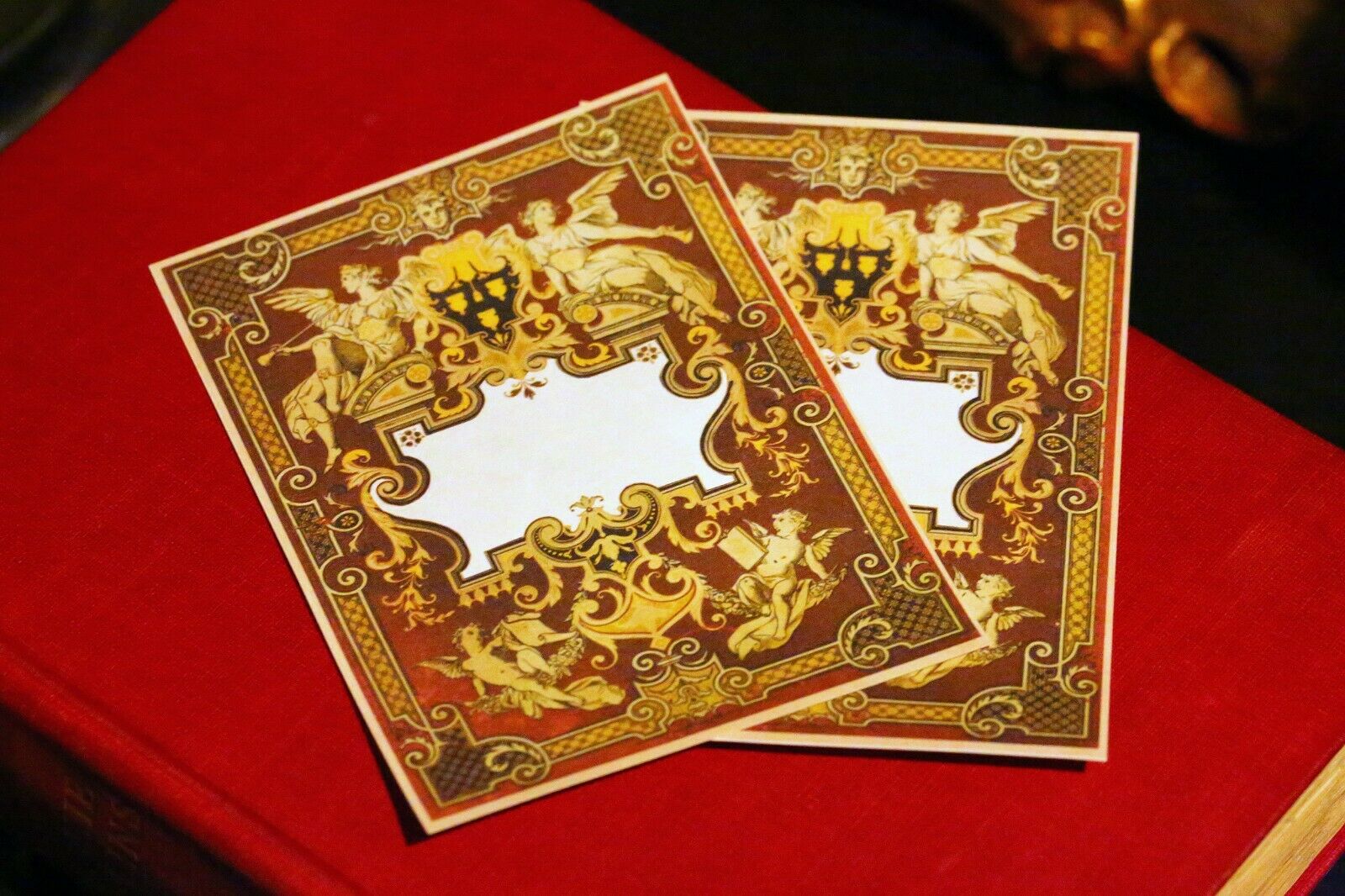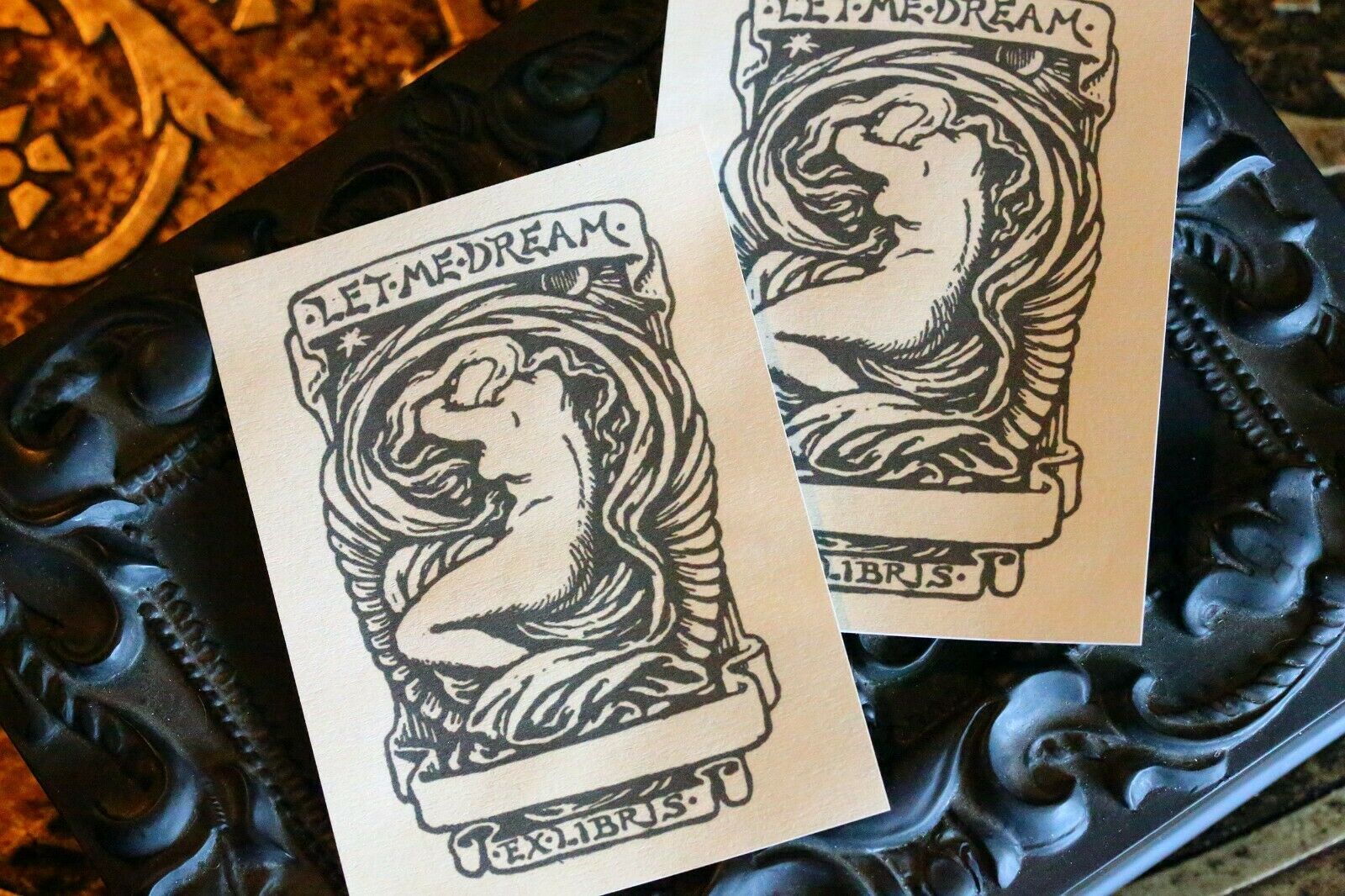-40%
1946 ANTIOCH BOOKPLATE pack with 36 Lithographed Sailing Ships & company booklet
$ 25.87
- Description
- Size Guide
Description
1946 ANTIOCH BOOKPLATE pack with 36 Lithographed Sailing Ships & company booklethe Antioch Company is one of the largest manufacturers of book-related
products
, producing and distributing diaries, journals, bookmarks, bookplates, and address books. The company distributes gift and novelty items through bookstores in the United States, the United Kingdom, and Canada. Antioch Publishing holds licensing agreements with many prominent artists and cartoonists including Anne Geddes, and
produces
products
with such notable
cartoon
names as Garfield, Peace Frogs, Looney Tunes, and Pokemon. Its wholly owned subsidiary Creative Memories is a direct sales scrapbook company which
produces
photo albums and related supplies. Creative Memories is the largest scrapbook company in the world and has expanded its operations to Australia, New Zealand, the United Kingdom, Taiwan, and Germany.
he earliest beginnings of The Antioch Company were forged in the halls of Antioch College of Yellow Springs, Ohio--a college well known for its free thinkers and liberal learning environment. Ernest Morgan and Walter Kahoe were students who worked part-time in the college
shop
. Urged on by ingenuity, an aversion to waste, and a propensity for hard work, the two created bookplates from recycled scrap material and launched what was to come to be known as The Antioch Bookplate Company (ABC) in 1926.
Bookplates had their origin in the 15th century, and served the purpose of identifying ownership of a book. Many bookplates went beyond the basic function of reminding the borrower to whom the book belonged and served as a decorative label with the identifying crest or armorial devices of its owner. Often bookplates were embellished with artistry or clever poetry designed to warn the borrower to treat the book with care and return it to its rightful owner.
Ernest Morgan and Walter Kahoe had become interested in fine printing while interning with the famous printing house of W.E. Rudge in New York, and found bookplates to be an alternative way to start out in the printing business. Beginning with artwork done by students at the college and scrap material, it seemed to be an enterprising way to make a living.
Morgan was interested in finding a product that could be prepackaged and allowed a different printer's lifestyle than the one he saw during his internship. Many print shops at the time experienced very irregular schedules, the work was either slow or extremely intense. As Morgan related years later in his autobiography,
Dealing Creatively with Life,
'There was a method in my madness in joining up with Walter in the bookplate project. I liked printing--especially beautiful printing--but it was always feast or famine--overtime or idleness. Then, too, it seemed to me that if you bid high enough to make money, you lost the order, and if you bid low enough to get the order you lost money. Far better to design a beautiful product, put a reasonable price on it, and merchandise it. Bookplates seemed to offer possibilities in that direction.'
In its first year of operation, ABC had 20 sales agreements with bookstores throughout Ohio, Michigan, and Indiana. Morgan had taken to the road hitchhiking his way to bookstores and book dealers in the region, choosing those dealers he found most desirable, but it was not long before the business's future was tested. During its first year, Kahoe was offered a position off campus as manager of the local, unaffiliated Antioch Press, and he found the offer too good to pass up, so he decided to sell his interest in the company to Morgan. The
settlement
was a mere 0.
The company's beginnings were humble. Utilizing the Antioch Press, an independent press next door to the college, the company continued to print and sell bookplates but was more strongly committed to its progressive, people-centered philosophy of life and work, than profits and growth.
Morgan managed the company and formed a short-lived partnership with another former Antioch student, Jesse Shelton. Morgan's bother Griscom and his sister Frances helped keep operations running smoothly, doing everything from reassembling a new second hand press to printing bookplates to keep up with orders. By the end of 1927 sales had risen to an encouraging 0. By 1928, short on space, the company moved to a small building next door. It was at this time that Morgan and Shelton dissolved their partnership. Shelton sold his partnership to Morgan in exchange for Morgan covering his debts.
In 1928 Ernest Morgan refused an offer from McGraw-Hill Publishing in order to continue to grow his fledgling business. Faced with the Great Depression in the 1930s, Morgan was able to reach an agreement with his employees by introducing a pay scale that included profit sharing at year's end. Morgan agreed to pay his employees 80 percent of their pay and, if the company proved profitable at the end of each year, the employees would receive their 20 percent contingent pay as well as a share of the profits.
The company was able to stay afloat, and by 1934 ABC was selling its products in all 48 states. In 1935 Ernest Morgan joined the typesetter's union. Morgan had cultivated a sensitivity to worker's issues and became actively interested in Socialist party politics. At the time his affiliations with what were seen as fringe groups sometimes worked against him, but the company also ended up with a lot of new accounts because of its liberal leanings and union ties. Labor groups and socialist organizations used the Bookplate Company for much of their printing, though such work was often donated at cost by the company.
In 1937 Antioch Bookplate Company was faced with increasing competition. It seemed as though every small printer was capitalizing on the scrap in their shops and producing bookplates and bookmarks of some kind. ABC concentrated its efforts on exposing pirated merchandise and producing quality and innovative products. The company also bought out many competitors along the way, one of the first was Louis Silver, a Chicago printer. Morgan liked Silver's designs for bookplates and offered to purchase them. Silver agreed to give ABC its designs for bookplates if ABC would help distribute Silver's line of bookmarks. Morgan had limited success with the bookmarks and went to Silver with some suggestions to improve the product and its packaging, Silver suggested that ABC buy the bookmark line and make the improvements themselves. Morgan agreed and the bookplate company began its bookmark business.
In 1941 perhaps the most significant early company growth occurred when fellow Antioch alumnus Dick Steinbeck proposed that ABC hire him as its full-time salesperson. Morgan tried to convince Steinbeck that he could not possibly make a living selling bookplates, but the deal was made with Steinbeck offering to keep expenses down by living in his
car
. Business took off, doubling in a year, and sales continued at a steady pace for some time.
In 1943, having begun printing and selling bookmarks, ABC produced its own line of bookmarks with religious text. The bookmarks proved very successful but some
initial
problems resulted when the company attempted to print on the plastic. The ink was not permanent and the text could be easily wiped off. Morgan remedied this by seeking out a chemical additive that rendered the ink unerasable. With the new 'Morgan Ink' in hand the company produced many printed plastic products as part of its inventory.
Ernest Morgan was a fan of beautiful art and woodcuts and for years he had admired the work of a well-known artist by the name of Rockwell Kent. An eastern company had pirated some of his designs for its bookplates and when Morgan originally approached Kent about using his designs, Kent responded by asking Morgan why he was asking for permission now when he had been stealing his stuff in the past. Morgan explained that Kent was confusing ABC with another company. The two became friends and Kent produced many bookplate designs for ABC. The company throughout its history continued the tradition of seeking out popular artists and cartoonists for its materials.
It took until 1946 for the company to officially incorporate. At the time, the Walt Disney Company signed an exclusive agreement allowing ABC to produce products with Disney characters on them.
Beginning in 1958 Morgan's son Lee began working part-time in the family-run business. Lee had graduated from college and had decided to work at Antioch. By 1959 ABC was producing 90 percent of the world's bookplates and Lee Morgan was taking a more active role in the company, becoming a sales representative in 1962.
During the next decade the company expanded its print shop capabilities by purchasing new equipment that allowed Antioch to do innovative types of printing, including lithography and all forms of color printing, and to produce specialized leather bookmarks.
In 1968 sales figures for bookplates stood at 15 million a year, distributed through 5,000 dealers nationwide. At the end of the 1960s the nation was going through its own social experimentation and The Antioch Bookplate Company sought like-minded individuals for employment with the rapidly growing company. ABC advertised in alternative journals throughout the country. Ads appeals ran as follows: 'Idealists wanted by printing business in unusual, well integrated, progressive college community. Staff includes persons of varied backgrounds, some with special interests in peace, human relations, economic democracy. ...' Indeed, Morgan assembled a multicultural mix of coworkers for what looked more at times like an experimental workers' commune than a print shop.
Leadership Under Lee Morgan: 1970s
In 1970 Lee Morgan officially took over first as executive vice-president and then the following year as president. Morgan updated production by using offset technology to run the business. He also increased wages within the company, offering pay that was more in keeping with industry standards; the changes took a toll on the company profit margin for some time. Although sales were up, profits lagged. In 1970 sales had reached 8,000, yet ABC recorded loses of ,677. Some employee owners doubted Morgan's leadership, but the modernization and growth paid off over time.
ABC was outgrowing its building by this time and in 1974 it moved its operations to a newly constructed building at 888 Dayton St. Under Lee Morgan's leadership Antioch Bookplate Company experienced rapid growth and expansion. The company continued to develop new products including tasseled bookmarks, calendars, diaries, and novelty items with psychedelic designs. In 1975, the growth was starting to yield results and sales surpassed million for the first time. Distribution was expanded to include Canada, England, and Australia.
Under Morgan's care ABC maintained its founding philosophy and its commitment to justice issues and workers' rights. Several examples throughout the 1970s stand out. In 1977 The Antioch Bookplate Foundation was formed. The Foundation enabled the company to give a portion of company profits back to the community.
In 1978 ABC was among the earliest of companies to discontinue sales in South Africa. The company employees voted to suspend all business with the country due to its racist system of apartheid. An employee stock ownership plan (ESOP) instituted in 1979 also exemplified ABC's commitment to its 50-plus workers. The company had long had a history of creatively paying its employees and the ESOP was another tribute to the way the Morgans valued their workers.
In 1980 ABC launched its first wholly owned subsidiary, Antioch Canada Ltd. The company was now manufacturing Advent calendars and religious greeting cards. ABC also had a licensing agreement with Jim Davis, creator of the comic 'Garfield,' for the production of bookmarks.
With the ever expanding merchandise the company was now producing and distributing, ABC made the decision to change its name officially to Antioch Publishing Company in 1981. Once again the company was outgrowing its space, so in 1981 it added 25,000 square feet to its main facility. Sales were now around the million mark.
In 1982 Antioch Publishing acquired Sullivan Printing Works Co. The company now had over 100 employees and Antioch set up another wholly owned subsidiary, Antioch UK Ltd.
Outgrowing its production space once again, the company expanded its facility by 24,000 square feet in 1984.
Perhaps one of the most significant turns of events in the company history happened in 1985 when Antioch Publishing, eager to get into the photo album business, purchased Holes-Webway Company, based in Minnesota. Holes-Webway was a financially struggling producer of photo albums and social books. Unbeknownst to the company at the time, in 1987 Holes-Webway became an opportunity for Antioch Publishing Company to create its most successful sales division ever, Creative Memories.
Birth of Creative Memories: 1987
Creative Memories, a wholly owned subsidiary of The Antioch Company, came to be when a high-level employee at Holes-Webway, Marketing Vice-President Cheryl Lightle, answered the phone after the office had closed for the day. A Montana woman by the name of Rhonda Anderson had called to order 40 scrapbook albums. Anderson had been keeping scrapbooks of her family for years and a local women's group took notice of the beautiful memory books and asked her to present a workshop on her scrapbooking method. Inspired by her designs the group wanted to begin scrapbooks of their own.
When Anderson related her story to Lightle, the two immediately saw the possibilities for a direct sales scrapbook company. Anderson and Lightle spent time talking about the content of the presentation and Lightle began developing a business plan.
Lightle and Anderson's chance phone meeting started what was to become the largest scrapbook company in the world. Anderson and her family moved to St. Cloud, Minnesota, where Creative Memories was to be based, and Lightle became president of the new company.
In 1989 Antioch sold Sullivan Printing to Patented Printing and concentrated its production on albums, scrapbooks, journals, and gourmet giftbooks. The company was continually improving its printing abilities by adding technological advances to its print shops. Computer-assisted graphics and other technologies gave Antioch a greater range of production capabilities.
By 1992, 55 percent of the company's sales were in photo albums, and Creative Memories demonstrations and products were the first to set off a scrapbooking frenzy among crafters worldwide. The company also added a press capable of printing stickers and labels used in scrapbook design in 1995.
By 1997 Creative Memories, with thousands of consultants worldwide, was selling million a day in products through home demonstrations and had expanded its operations into Australia and Taiwan. A production facility built in Sparks, Nevada, helped the company keep up with manufacturing and allowed for better distribution.
In 2000 demand for scrapbooks and scrapbook accessories continued to rise and Creative Memories opened a new manufacturing facility in Richmond, Virginia. The new facility also served as a distribution center to new markets in New Zealand, Japan, and Germany.
The Antioch Company from its humble beginnings to its tremendous success with Creative Memories stayed true to its corporate spirit of innovation and risk-taking. The company had developed beautiful products and creative ways to market them to the public, and in turn it had grown exponentially, more so than anyone might have imagined for a business that began in a college print shop. The company stood as a tribute to the creative spirit of its founder, Ernest Morgan, and the boldness, ingenuity, and management of his son and successor, Lee Morgan.
Principal Subsidiaries:
Creative Memories; Webway; Antioch North America; Antioch UK Ltd.
Principal Competitors:
Hallmark Cards, Inc.
Check out my
other items
!
Be sure to add me to your
favorites list
!
